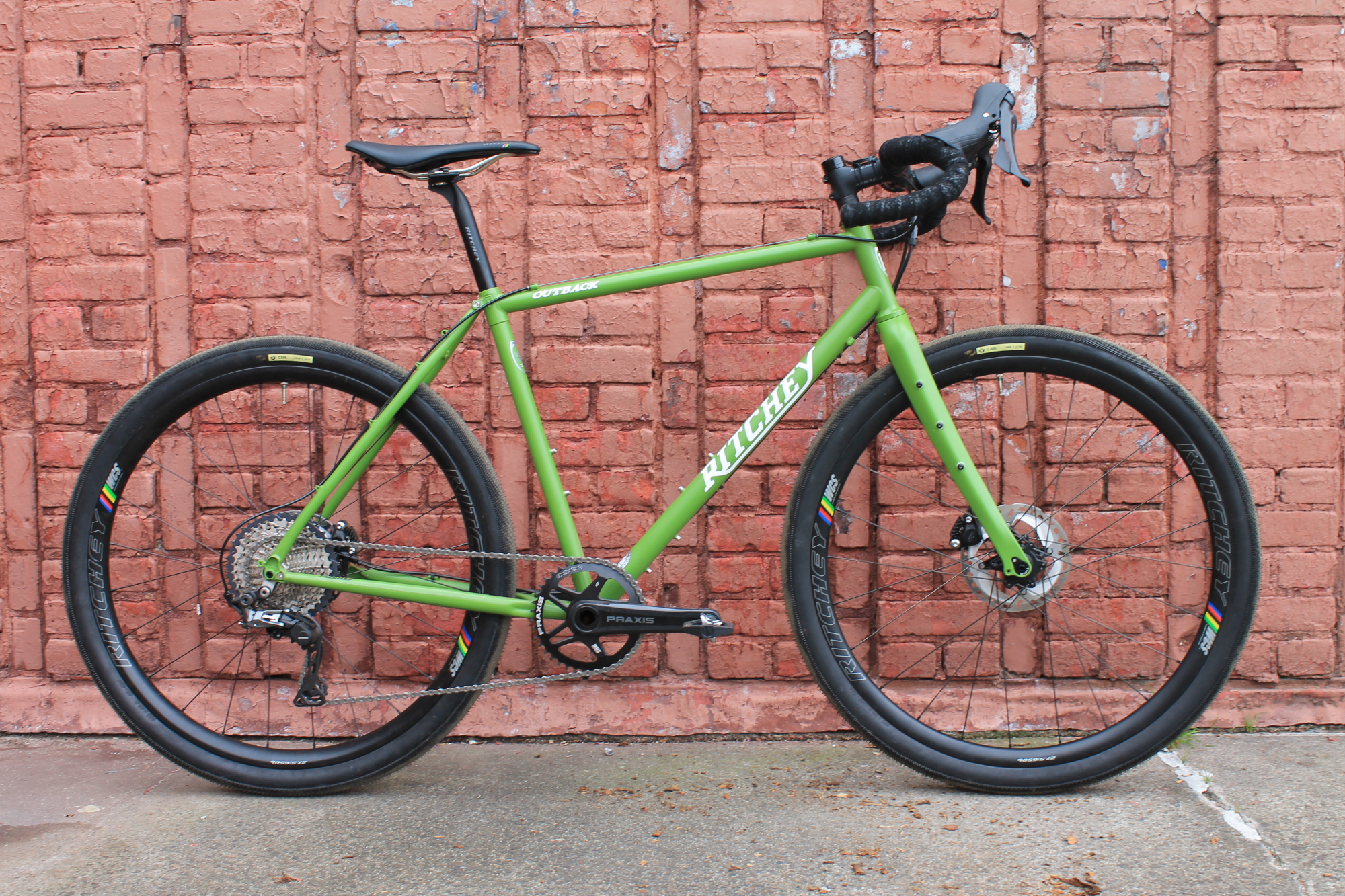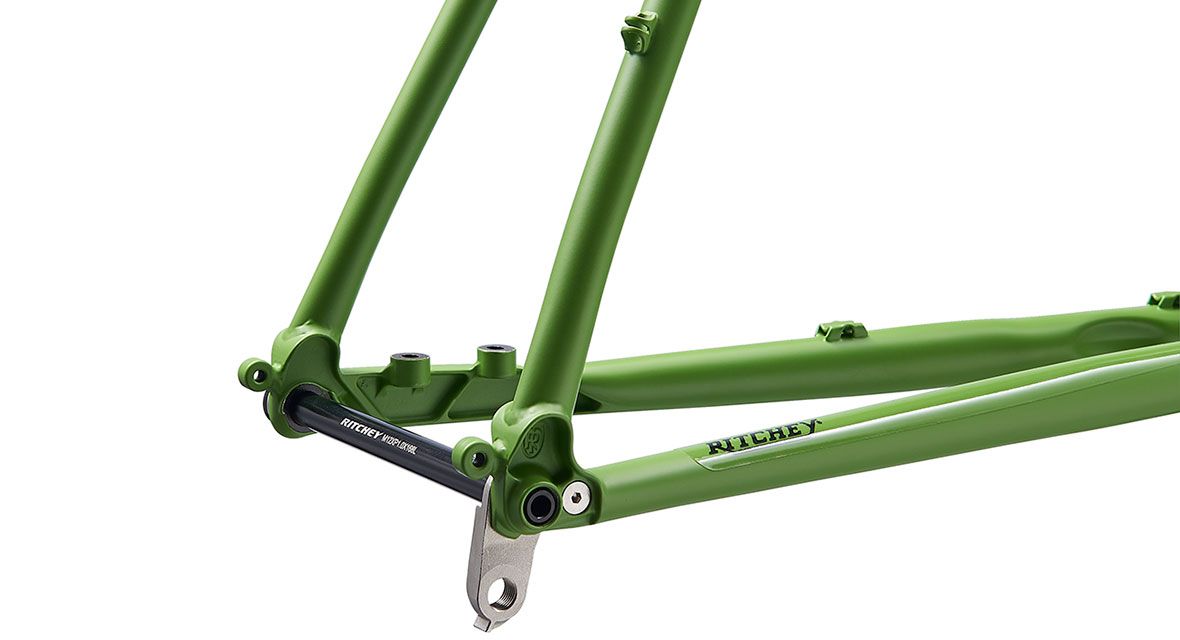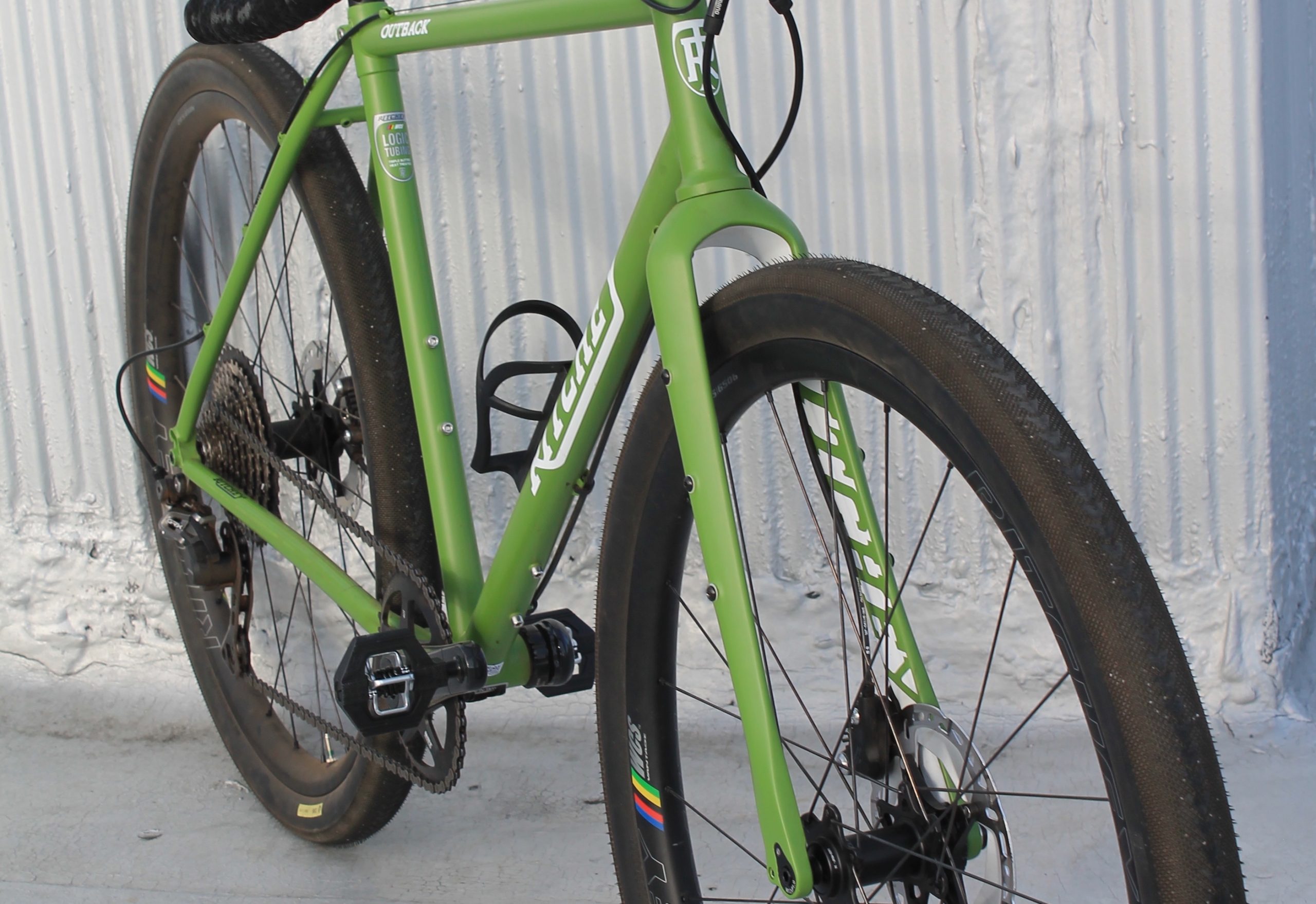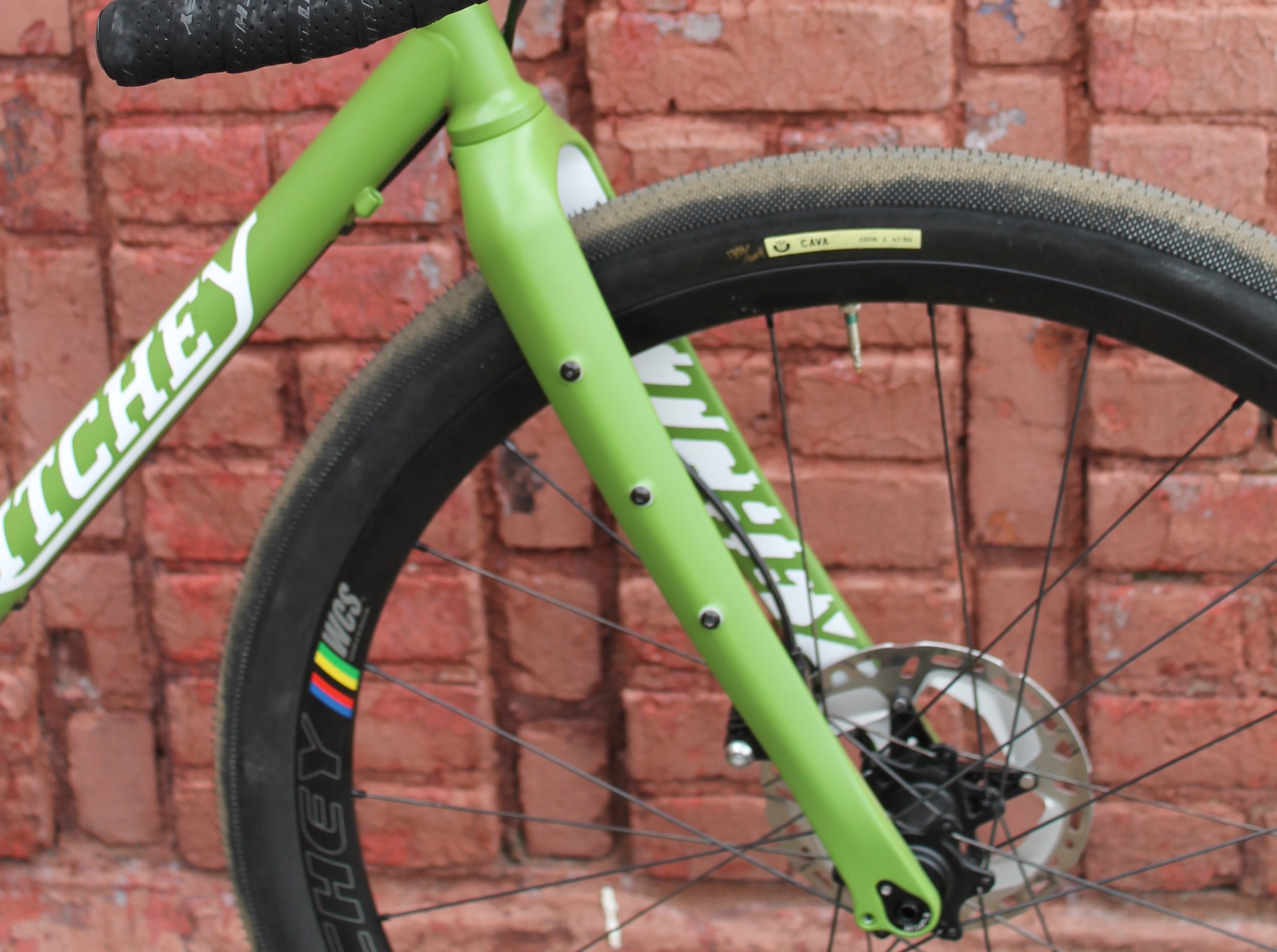Ritchey Outback gravel frameset review
A stable gravel partner offering versatility and comfort

So how to best sum up the Ritchey Outback? In simple terms it’s a joy to ride. It handles like a dream and is supremely comfortable, making it above all else fun to ride. And isn’t that pretty much the point? I’d also add that the considered nature of the Outback’s nuanced design make it one of the finest examples of a bike company’s ability to create a frameset that responds to and reflects the multifaceted ‘gravel experience’. As gravel riding continues to evolve new questions are asked of bike manufacturers. For me, Ritchey’s answer, in the shape of the Outback, is an emphatic success.
-
+
Incredibly comfortable and stable ride
-
+
Very versatile, allowing for several build options
-
+
Exceptional build quality
-
-
Only available in one colourway
You can trust Cycling Weekly.
If you were looking for someone to design you a gravel bike frameset you’d be hard pushed to find anyone more suited to the task than Tom Ritchey. After all this is a man who started riding drop bar bikes off-road decades before it became a ‘thing’. He continues to log tens of thousands of miles on such terrain, feeding back a lifetime of reconnaissance into the frames and products he designs under his own name. So it’s safe to say that my expectations for the Ritchey Outback gravel frameset were very high indeed.
If this were a movie review I’d need to issue a spoiler alert here. The Outback met and in fact surpassed these expectations. The reason I'm declaring this here is that I would have found it next-to-impossible to bury my admiration for the Outback deeper in the review.
Frame details
The Ritchey Outback is now in its second incarnation. The 2020 model benefits from some pretty substantial updates from the first-gen offering. Whereas the original was more of a monstercross machine, the latest Outback is more versatile, reflecting the widening sphere that gravel riding now operates in.
Firstly, there’s the increased tire clearance, which means you can now run 700c x 48m or 650b x 2.0” rubber. Then there’s the completely reworked adventure fork, an all-carbon affair with multi-purpose mounts, helping to make the Outback even more bikepacking friendly. There are also rack and mudguard (fender) mounts plus three more for cages. Other changes include a frame that now accepts flat mount disc brakes. Finally there are a few geometry tweaks, most notably longer chainstays, which now measure 453mm, and an increased wheelbase; my size medium measured 1060.4mm.
But fortunately a few important features remain. The Outback uses Ritchey’s proprietary triple-butted Logic steel tubing, which is heralded for its blend of comfort and responsiveness. It also features a 68mm threaded bottom bracket and external cable routing. Tom Ritchey is adamant in his belief that both these standards make sense for most bikes and most bike riders. I would largely agree. I’ve never been a fan of pressfit bottom brackets because of the super tight tolerances required to ensure they remain creak-free.
Equally, my time spent working as a mechanic has given me a general disdain for internally routed cables too. And while hidden cables make sense on a race bike from both an aesthetic and aerodynamic perspective, the Outback is designed for adventure. If I’m heading into the unknown I want cables I can see both for easy diagnosis and simplicity of repair.
The Outback is beautifully refined in its appearance, even if gravel bikes probably aren't renowned for their elegance. Across the frame the thin-walled Logic steel tubing lends it a classic feel.
There are a number of touches that ooze understated sophistication and reflect the all-round high build quality. The forged and machined straight headtube with its integrated headset cups bucks the tapered trend but looks all the better for it. The integrated seat collar (which takes a 27.2mm seatpost) is equally stylish as are the dropouts designed around a 12mm thru-axle standard. All in all, it’s a classy looking machine with a real timeless quality that perhaps only steel can deliver.

The Outback is only available as a frameset. This speaks to its versatility and allows you to build it up in a number of ways, including with both a 1x and 2x drivechain. My review bike is best described as a lightweight gravel grinder. It includes a 1x Praxis Zaynte carbon chainset alongside Shimano GRX hydro shifters and rear derailleur. Then there’s a prototype Ritchey carbon 650b wheelset shod with Ultradynamico Cava 47mm tires. Cockpit and finishing kit comes courtesy of Ritchey’s top end WCS line, including its new Toyon gravel stem and Beacon gravel bars. The handlebars are very distinctive and worthy of their own review, which you can read here.
The ride
Jumping on the Outback my initial impressions were dominated by two sensations: one of stability and one of comfort.
Lengthening the frame’s wheelbase clearly works as I was immediately taken with just how solid the bike felt. On the road this had me feeling very centered, a position I could settle into for hours if required. On my first few rides I was pleased at just how easily the Outback ate up the tarmac, feeling assured and stable at all times.
When I reached the trails this perceptible stability really shone through. Loose gravel and sand can often result in a bike squirming a little but the Outback held firm, even at slower speeds. Tackling steep woodland paths I always felt in control thanks to the Outback’s reliable handling. As I got to know the bike a little better this meant I could go faster and try bolder lines, buoyed by the confidence that I’d gained from those first few rides.

And as for comfort? The Outback is genuinely one of the most comfortable frames I have ever ridden. First impressions were that it felt full of life, just like a few other high-quality steel frames I’ve ridden; compliant without ever feeling dull. As my time spent aboard the Outback increased I sought out harsher surfaces. Each time it responded with a resilience that was impressive. City streets littered with cracks and potholes. Rutted tracks with an abundance of tree roots. Gravel paths with large, loose stones. None of them were a match for the Outback. It offered feedback but provided an ample buffer against challenging surfaces. So much so I started to think of it as something of a magic carpet. My back and legs agreed!
There was also another attribute of the Outback’s ride quality that really sang. And one that I found a little more surprising. The bike was both fast and very lively. It responded positively when I really pushed on the pedals, accelerating quickly on both flat roads and inclines. The front end felt genuinely snappy. So a surprise, but a very pleasant one indeed.
When it comes to the ride qualities I’m looking for in a gravel bike, stable, comfortable yet responsive pretty much covers it. And the Outback delivers this with aplomb. But what I really came to appreciate the more I rode it, and why I’m just so enamored with this bike, is how Ritchey has seamlessly blended these elements into the Outback’s design. At no point did I feel that one came at the expense of the other. Rather they are sublimely balanced, counter-weighted to deliver a bike that responds to your demands and to the riding conditions. When I needed it to connect me to the road it did. When I required it to deliver assurance it answered. And when I needed comfort it provided it in spades. The Outback proves that ‘nimble’ and ‘stable’ aren’t mutually exclusive in a frame’s design.
A versatile frameset
Chatting with Fergus Liam, Ritchey’s US marketing manager, he’d described the Outback as “a quiver killer.” As a phrase it stuck with me. On my rides I found myself contemplating whether the Outback was indeed that uniquely adaptable kind of bike, capable of replacing several others in your stable. Certainly, its high build quality and its blend of new standards such as flat mount disc brakes with the tried-and-tested threaded bottom bracket make it a frameset with plenty of longevity.
Equally its superb balance of comfort and responsiveness make it ideal not just for bikepacking adventures but also as a frameset perfectly suited to endurance gravel races and even randonneur and audax events too. Build it up with some carbon 700c wheels and a carbon cockpit and you have a sub-8.6 kgs / 19lbs bike that would be racy yet compliant, ideal for those long days in the saddle. Add some mudguards (fenders) into the mix and you’ve got a reliable winter road bike too. Armed with two sets of wheels it’s fair to say you’d have a bike that could handle a variety of riding conditions without compromise. A ‘quiver killer’ indeed.

With a view to fairness, I attempted to find some things that I didn’t like about the Outback. But I really couldn’t find anything of a serious nature. The rear derailleur cable is routed along the top tube and down the rear stay rather than along the downtube and under the bottom bracket shell and chainstay. It might suggest that fitting a frame bag could cause interference with the cable. However, Ritchey says it chose this routing as it offers both the best approach angle to the rear derailleur and keeps the cable out of the muck. It’s a decision apparently based on the feedback they received from its Swiss Cross cyclocross frameset. As for fitting a frame bag, if you’re concerned about it impacting on your shifting you can easily run a length of housing between the two frame stops.
Then there's the colour. It's the only one the Outback is currently available in. Ritchey calls it Guac y Crema. Personally I grew to like it but it might not be to everyones tastes. Either way if you’re thinking about buying an Outback I’d urge you not to let this be a deal breaker. It’s also worth noting that Ritchey often adds an additional colour after a year or more. So I wouldn’t be surprised to see the Outback in a secondary colour sometime in 2021.
Price as reviewed: $1399 / £1300 (frameset only)
Frame
- Frame Material: heat-treated, triple-butted Ritchey Logic steel tubing - TIG welded
- Rack and fender mounts
- Ultra-light forged and machined straight 1-1/8" headtube
- WCS headset included (upper IS42/28.6 - 16mm stack height | lower IS42/30)
- 142mm spacing (12mm alloy thru-axle included)
- Replaceable stainless-steel derailleur hanger
- 27.2mm seat tube with integrated seat collar (max torque setting: 6Nm)
- Front derailleur clamp size: 28.6mm (max torque setting: 2.5Nm) - not included
- Bottom bracket: 68mm - English threaded
- Can accommodate 1X or 2X chainrings
- Crankset min/max ring size - single: 36 to 46t / double: 46/30t to 50/34t
- External cable routing
Fork
- New Ritchey Carbon Adventure Fork with multi-purpose, rack and fender mounts
- 1-1/8" straight steerer with integrated 45-degree crown race
- 100mm spacing (12mm alloy thru-axle included)
- Steerer length: 300mm
- Axle-crown: 393mm
- Rake/Offset: 50mm
- Fork max payload: 3kg per side

Thank you for reading 20 articles this month* Join now for unlimited access
Enjoy your first month for just £1 / $1 / €1
*Read 5 free articles per month without a subscription

Join now for unlimited access
Try first month for just £1 / $1 / €1
Get The Leadout Newsletter
The latest race content, interviews, features, reviews and expert buying guides, direct to your inbox!
Luke Friend has worked as a writer, editor and copywriter for twenty five years. Across books, magazines and websites, he's covered a broad range of topics for a range of clients including Major League Baseball, the National Trust and the NHS. He has an MA in Professional Writing from Falmouth University and is a qualified bicycle mechanic. He has been a cycling enthusiast from an early age, partly due to watching the Tour de France on TV. He's a keen follower of bike racing to this day as well as a regular road and gravel rider.
-
 A bike rack with an app? Wahoo’s latest, and a hub silencer – Sea Otter Classic tech highlights, Part 2
A bike rack with an app? Wahoo’s latest, and a hub silencer – Sea Otter Classic tech highlights, Part 2A few standout pieces of gear from North America's biggest bike gathering
By Anne-Marije Rook Published
-
 Cycling's riders need more protection from mindless 'fans' at races to avoid another Mathieu van der Poel Paris-Roubaix bottle incident
Cycling's riders need more protection from mindless 'fans' at races to avoid another Mathieu van der Poel Paris-Roubaix bottle incidentCycling's authorities must do everything within their power to prevent spectators from assaulting riders
By Tom Thewlis Published
-
 Man hands himself in to Belgian police after throwing full water bottle at Mathieu van der Poel during Paris-Roubaix
Man hands himself in to Belgian police after throwing full water bottle at Mathieu van der Poel during Paris-Roubaix30-year-old was on Templeuve-en-Pévèle cobbled sector when television pictures showed the bottle hitting him in the face
By Tom Thewlis Published